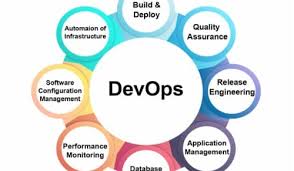DevOps are the standard procedures and practices that empower organizations to build large scale products at a faster speed and improved performance in infrastructure management and software development process. Several benefits that highlight the importance of DevOps procedures in the organization include more optimized performance, streamline workflows, flexibility, agility, and higher team engagement. Cuelogic offers the best DevOps solutions for businesses to integrate these procedures into their development lifecycle to enhance productivity in a more swiftly and reliable solution.
Especially for large and complex projects, these DevOps processes have shown remarkable capabilities to build a well-organized system for the software development cycle. Organizations are always looking for professionals to get them accustomed to these sophisticated solutions. Here are the main factors that define the successful implementation of DevOps in an organization.
DevOps Culture
The foremost requirement for the implementation of DevOps is to bring the culture within the organization. Right from operators, middle and upper management developers, supervisors, and even executives need to work collectively in this environment for DevOps to function accurately. This cross-discipline mutual understanding is must to benefit from DevOps procedures. The organization’s goal should be prioritized more than anything, and team collaboration is the first key factor for DevOps.
Automation is the key
DevOps guides organizations to automate each step of the development cycle, starting from the build to the deployments, testing, and even reporting procedures. These programs can help reduce the time and efforts to do mundane tasks empowering teams to give more time to accomplish goals. And with big data automation helps to segregate and collect information from millions of unstructured data streams. Cuelogic is a trusted DevOps service provider assisting organizations to automate their operations for higher productivity.
Cross-functional teams
With DevOps, you have to work with multiple teams in collaboration to handle a large amount of data. Assigning effective roles and responsibilities among skilled team members is another major factor for implementing DevOps procedures. This allows businesses to get more effective and productive in achieving goals within the shortest time. Managers can easily collaborate among teams to finalize project specifications with multiple releases, upgrades, and strategically plan for the future.
Transparency
DevOps focuses on active collaboration among team members for creating transparency throughout the system. Roles and responsibilities are well defined for individuals within the organization. Thus, keeping more realistic expectations from the teams and believing more in the DevOps procedures. Successful Organizations using DevOps procedures now can easily scale and predict timelines for product development.
Real-time feedback
Including customer feedback within the product, the cycle is another important factor for DevOps procedures. It allows customers to quickly check the features and report bugs in the real-time development stage only. Thus, clearing fixes bugs and issues even before the release. This whole process keeps a strong check on the software quality and quickens the pace for multiple releases. DevOps solution providers nowadays understand the importance of customer feedback in the DevOps procedures and keep them in the loop to avoid pitfalls later when they experience the product in real-time.
Continuous Integration and Continuous Delivery (CD)
DevOps are mainly known to bring a Continuous Integration (CI) and Continuous Delivery (CD) environment in the organization. This complements the nature of large software products as multiple versions, and features are released simultaneously. Maintaining the highest standards within the organization while still keeping the optimum software quality makes the DevOps
Performance Analysis and further improvement
DevOps procedures are highlighted by continuous monitoring in their overall cycle. Each step, section, and phase is constantly evaluated to find Key Performance Indicators (KPI). All efforts for monitoring and analysis are focussed on uncovering issues or bottlenecks in the process of improving the software lifecycle. Multiple teams depend on their metrics and performance each time to deliver products with impeccable results.
More Security with DevSecOps
In a fast-paced working environment, security features are often ignored to maintain software quality, thus making it vulnerable to online attacks. But with DevSecOps factors team can easily integrate security in every step from the beginning to find bugs and vulnerabilities for fixing them with continuous improvement and thus, helping the organization to secure their valuable information while following all international data protocols.
Conclusion:
Undoubtedly, building a DevOps culture within the organization is instrumental in delivering high performance for finishing projects with impeccable performance.
Evaluating the performance of each member, their roles, and goals allows the organization to have a realistic projection for their performance. Team collaboration adds more value to the organization’s goal and keeps things simple to avoid any bottlenecks. So integrating the right culture and right tools are fundamental aspects of successful DevOps implementation.



No comments:
Post a Comment